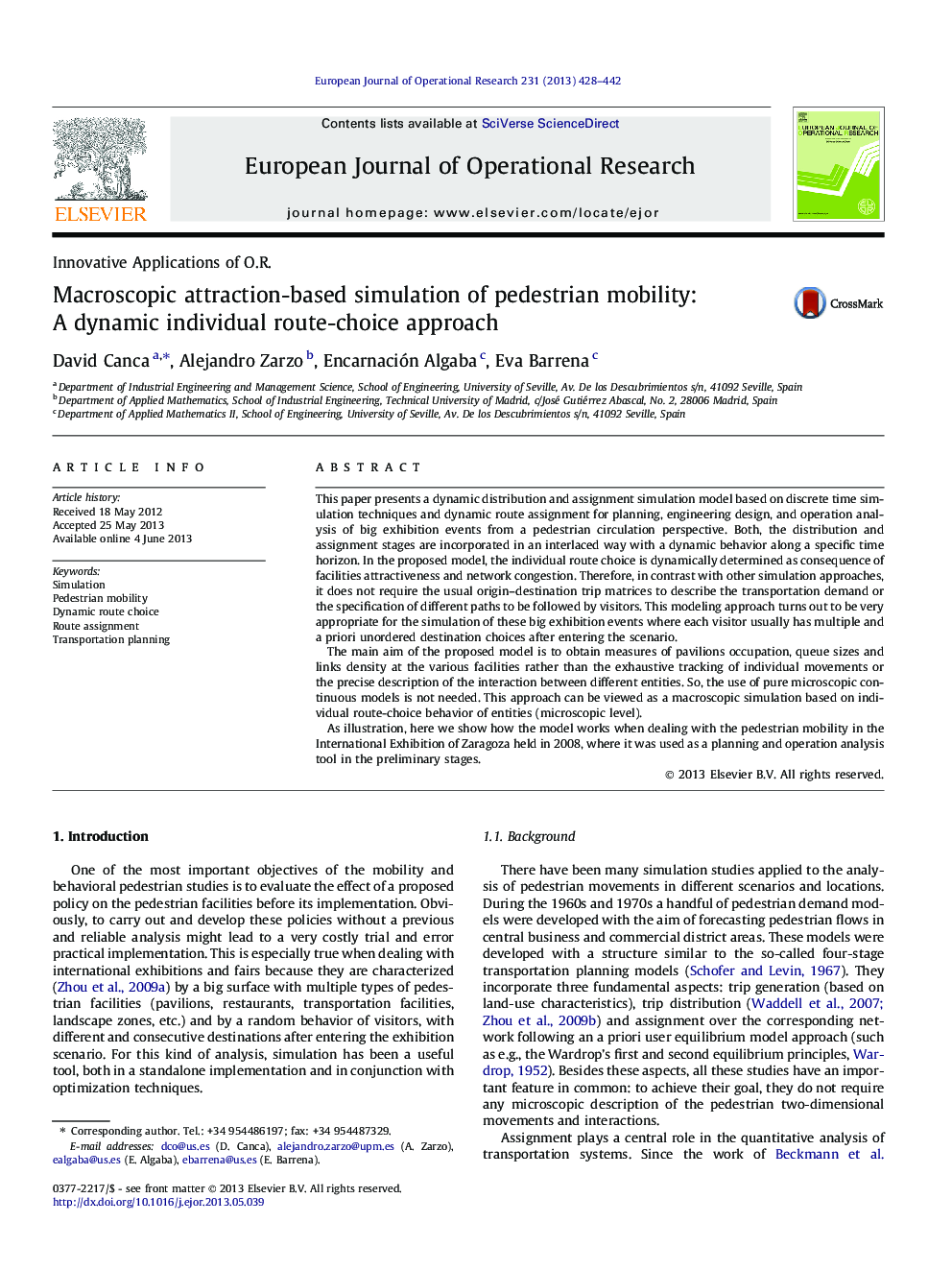| Article ID | Journal | Published Year | Pages | File Type |
|---|---|---|---|---|
| 476706 | European Journal of Operational Research | 2013 | 15 Pages |
This paper presents a dynamic distribution and assignment simulation model based on discrete time simulation techniques and dynamic route assignment for planning, engineering design, and operation analysis of big exhibition events from a pedestrian circulation perspective. Both, the distribution and assignment stages are incorporated in an interlaced way with a dynamic behavior along a specific time horizon. In the proposed model, the individual route choice is dynamically determined as consequence of facilities attractiveness and network congestion. Therefore, in contrast with other simulation approaches, it does not require the usual origin–destination trip matrices to describe the transportation demand or the specification of different paths to be followed by visitors. This modeling approach turns out to be very appropriate for the simulation of these big exhibition events where each visitor usually has multiple and a priori unordered destination choices after entering the scenario.The main aim of the proposed model is to obtain measures of pavilions occupation, queue sizes and links density at the various facilities rather than the exhaustive tracking of individual movements or the precise description of the interaction between different entities. So, the use of pure microscopic continuous models is not needed. This approach can be viewed as a macroscopic simulation based on individual route-choice behavior of entities (microscopic level).As illustration, here we show how the model works when dealing with the pedestrian mobility in the International Exhibition of Zaragoza held in 2008, where it was used as a planning and operation analysis tool in the preliminary stages.
